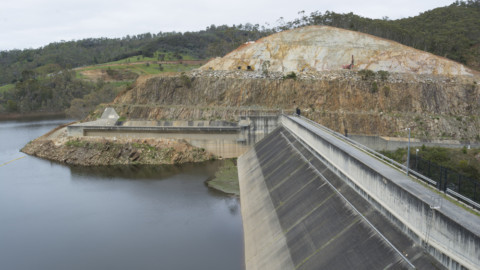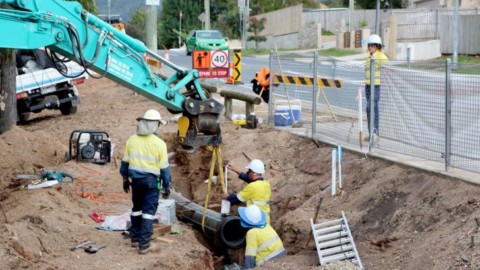 In South Australia, ZEN Energy is undertaking a ground breaking project to demonstrate the real-time optimisation and monetisation of battery storage in the National Electricity Market (NEM) by connecting four high-profile Adelaide CBD institutions to 513kWh of behind the meter storage. Here, ZEN Energy General Manager of Engineering Terry Teoh discusses the project, how battery storage can stabilise networks, smooth the transition from coal-based to renewable energy resources, and help solve SA’s energy issues.
In South Australia, ZEN Energy is undertaking a ground breaking project to demonstrate the real-time optimisation and monetisation of battery storage in the National Electricity Market (NEM) by connecting four high-profile Adelaide CBD institutions to 513kWh of behind the meter storage. Here, ZEN Energy General Manager of Engineering Terry Teoh discusses the project, how battery storage can stabilise networks, smooth the transition from coal-based to renewable energy resources, and help solve SA’s energy issues.
Terry Teoh worked in the oil and gas industry before moving into renewable energy in 2000. He says that this career change was “driven by a passion to respond to climate change through corporate endeavour.”
“Back then, it was a heady time with Australia implementing MRET (the precursor to LRET) and embarking on its renewables transformation journey,” he says. “I ran Pacific Hydro’s development function developing large-scale wind and solar farms backed by pension fund investors.
“In 2015, I came on board ZEN Energy as GM of Engineering. It is a broad-based corporate role with an engineering focus.”
The brainchild of founder Richard Turner, ZEN Energy was established in 2004 as a pioneering solar company. Later, it became an early adopter of battery storage.
“We strive to be industry thought leaders, harnessing partnerships to bring together energy market understanding and commercial innovation to enable the value from behind the meter and grid-scale battery storage to be financed and monetised,” says Mr Teoh.
Demonstrating the benefits of battery storage
ZEN Energy’s South Australian storage demo project will play a vital role in enabling the company’s goals.
“The project aims to showcase first deployment of behind the meter storage in commercial buildings in the Adelaide CBD,” says Mr Teoh.
“ZEN nominated four sites; the Art Gallery, State Library, Adelaide High School and the Adelaide City Council works depot in Thebarton. These sites were chosen for their contrasting load and occupancy patterns, and their potential to apply battery storage in conjunction with solar and demand response.”
The batteries will perform behind the meter applications, including demand charge management and tariff arbitrage, as well as front of meter applications comprising network response and provision of electricity market ancillary services. These uses will generate commercial learnings about the role of batteries to safeguard and support the continuing transformation of the South Australian electricity system.
“What I consider is really exciting about the concept we put forward is a set of four battery use cases that straddle the grid edge,” said Mr Teoh. “That is, the batteries are configured to handle meter inward and meter outward uses, and for these to be co-optimised in real time.
“GreenSync is our software technology partner. Based in Melbourne, their Distributed Energy Resources management platform will perform the optimisation of the initial set of use cases, with a ready-made pathway to aggregation to provide wholesale response and network response services.”
From concept to commercial reality
ZEN Energy’s storage demo project is intended as a step on a larger journey for the company, and also has significant implications for Australia’s energy storage market in general.
“Global experience shows that commercial behind the meter storage is challenging,” says Mr Teoh. “Yet the market potential in South Australia and more broadly in the NEM states is significant.”
“This $1 million project will play a defining, catalytic role in opening up the commercial storage market, beginning in South Australia. It will provide real implementation experience and benefit quantification of batteries located in commercial sites, monetising multiple value streams.
“It will turn a theoretical concept into commercially executable reality for commercial and industrial customers looking for a lifeline to alleviate their energy price distress in South Australia.”
Harnessing the power of big batteries
The Adelaide CBD demonstration is not the company’s only project with the potential to help combat South Australia’s much publicised electricity supply and pricing issues.
ZEN Energy has also been working on proposals for a number of large-scale solar developments at the major South Australian regional centres of Whyalla, Port Pirie, and eventually Port Augusta. The large battery project at Port Augusta has been dubbed the “Big Battery Project”.
The Big Battery Project proposes installing a large battery capable of storing between 50-150MWh of energy at Port Augusta.
Originally the project aimed to install a 50MWh battery, large enough to stabilise solar energy supplies from ZEN’s Upper Spencer Gulf projects, provide grid stability to compensate for the closure of the Northern Power Station in Port Augusta in May 2016, and to contribute to stabilising wholesale electricity prices within the NEM.
However, in response to South Australia’s recent grid stability problems the company decided to consider even larger batteries that would make even greater contributions.
Options explored so far include a 100MW battery, which would provide an additional buffer against involuntary load shedding across the grid, such as that which occurred during the heatwave of February 2017.
The potential for a 150MW battery has also been considered. According to ZEN Energy, a battery of this size could address South Australia’s need for fast-frequency response to stabilise grid frequency and voltage in special circumstances of sudden loss of power within the grid.
Looking to the future
Achieving the widespread uptake of commercial battery storage across Australian networks is not without obstacles. Chief among these is the need for regulatory reform to allow for more efficient operation of the electricity grid and the wholesale electricity market.
“Ancillary services (FCAS) regulatory reform is needed to value batteries for their unique ability to provide fast-acting synthetic inertia to stabilise the network,” says Mr Teoh.
“The evidence from regulatory reform undertaken in the US in 2012, through Federal Order FERC 755, is clear. It led to the deployment of some 380MW of grid scale batteries and a lower cost overall to grid users of providing ancillary services.
“Passing such reform, suitably adapted for the NEM, would bring about significant deployment of large-scale batteries to support deeper transformation of our electricity system towards renewables, while maintaining vital grid stability.”
Overall, Mr Teoh sees commercial energy storage as part of a larger trend of disruptive technological innovation and digitisation.
“Probably one of the most exciting trends today is the pervasive digitisation of economy and society at a fundamental level,” he says. “An example of this is blockchain, popularly associated with the cryptocurrency Bitcoin, which has broad application in health and energy, to name but two instances.
“Power Ledger, a Perth-based technology startup is using energy blockchain to establish a platform for peer-to-peer energy transactions. Blockchain provides a near-unbreakable self-administered decentralised settlement register, dispensing with the need for a ‘reserve bank’.
“Energy storage and the ability to perform peer transactions lie at the heart of grid digitisation and will drive the democratisation of energy, just as we are seeing the democratisation of services, media and R&D,” he says.
Terry Teoh will discuss these issues, and more, in further detail as part of his presentation, ‘Monetising Storage at the Grid Edge in the Adelaide CBD: The South Australian storage demo project’, at the Australian Energy Storage Conference & Exhibition 2017. This must-see industry event will run from 14-15 June at the International Convention Centre in Sydney.
For more information, or to register, visit, https://www.australianenergystorage.com.au/.















